
Roots
The story of hair, particularly textured hair, is not merely a biological tale of follicles and strands; it is a profound cultural record, etched into the very fibers of human history. For those with coils, kinks, and waves, hair has always been a language, a living chronicle of identity, status, spirituality, and even defiance. Before the advent of modern chemical alterations or the widespread influence of Western beauty norms, hair held a sacred place in societies across the globe, especially within African civilizations.
Its presentation, its adornment, and its covering conveyed messages as intricate as any spoken word. To understand the coverings that have graced textured hair through centuries is to listen to these whispers of the past, recognizing them as more than simple fabric or accessory, but as profound statements of self and community.

Hair as a Living Archive
In many ancient African communities, hair was a primary visual marker, a living archive of a person’s life and standing. A glance at someone’s coiffure could convey their age, marital status, religious beliefs, ethnic lineage, or even their wealth and social standing within the community. Elaborate styles, often requiring hours of communal effort, were not merely for aesthetic pleasure; they served as non-verbal communication, a testament to shared traditions and individual journeys.
Royal figures in ancient Egypt and Nubia, for instance, often adorned their hair with elaborate headbands or wigs, signifying their divine connection and authority. These practices underscore a universal human desire to adorn and communicate through personal presentation, with hair as a central medium.
Hair in ancient African societies functioned as a powerful, unspoken language, revealing an individual’s identity and community standing.
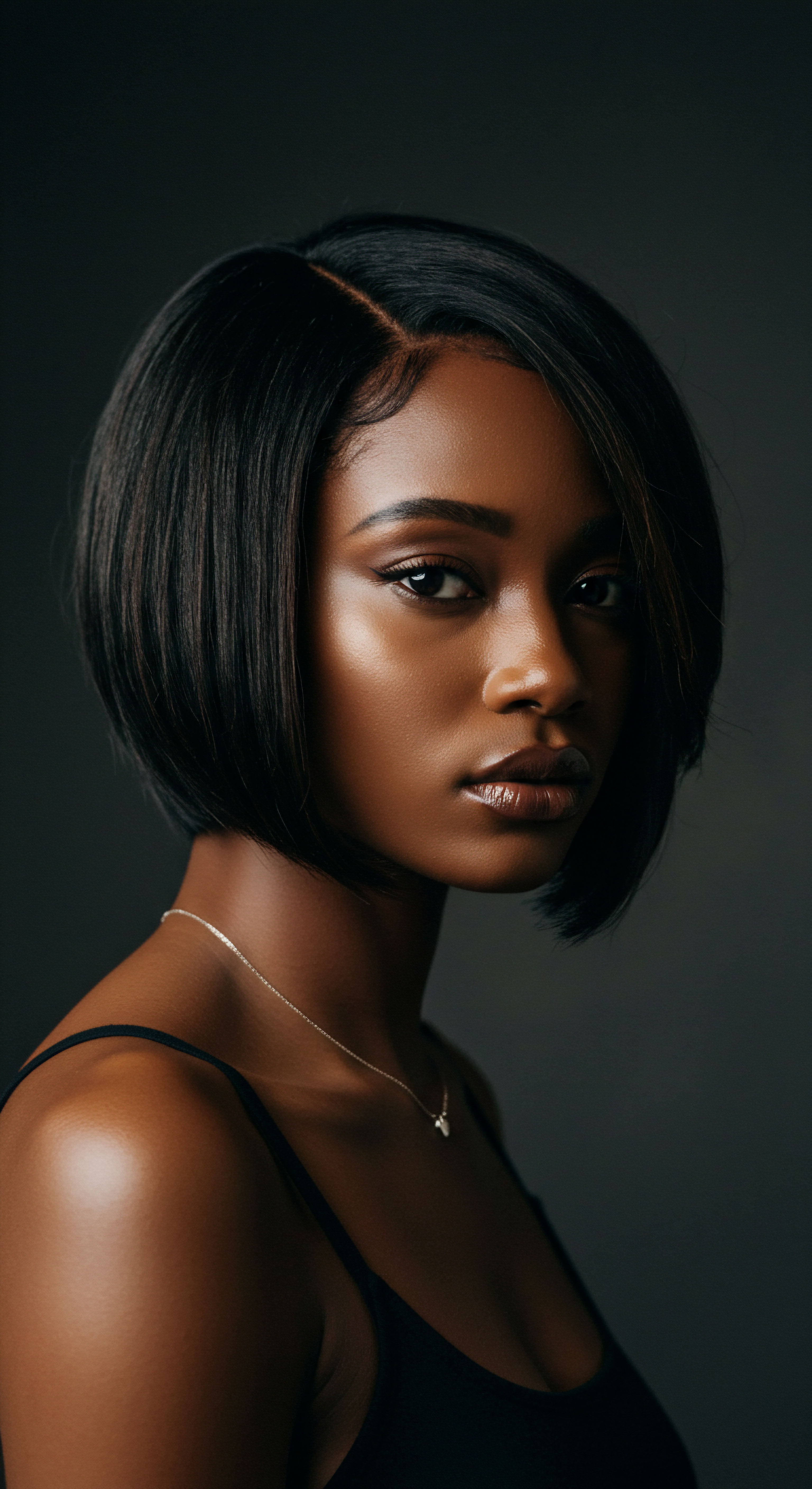
The Science of Texture and Its Care
Textured hair, with its unique helical structure, possesses inherent characteristics that distinguish it from straighter hair types. The tight curl pattern, while offering incredible versatility in styling, also presents particular care requirements. Sebum, the scalp’s natural oil, struggles to travel down the full length of a coily strand, leading to increased dryness. This dryness, in turn, makes textured hair more prone to breakage and split ends.
The very nature of its curl creates points of vulnerability, making detangling a delicate dance rather than a simple brush-through. These inherent characteristics meant that protective measures, often including various forms of coverings, became not just cultural choices but practical necessities for maintaining hair health in diverse environments.
- Dryness ❉ The spiral shape of textured hair hinders sebum distribution, leaving strands susceptible to desiccation.
- Breakage ❉ Points along the curl pattern can be fragile, making hair vulnerable to snapping during manipulation.
- Tangles ❉ The tight coiling leads to strands intertwining, necessitating careful detangling to preserve length.
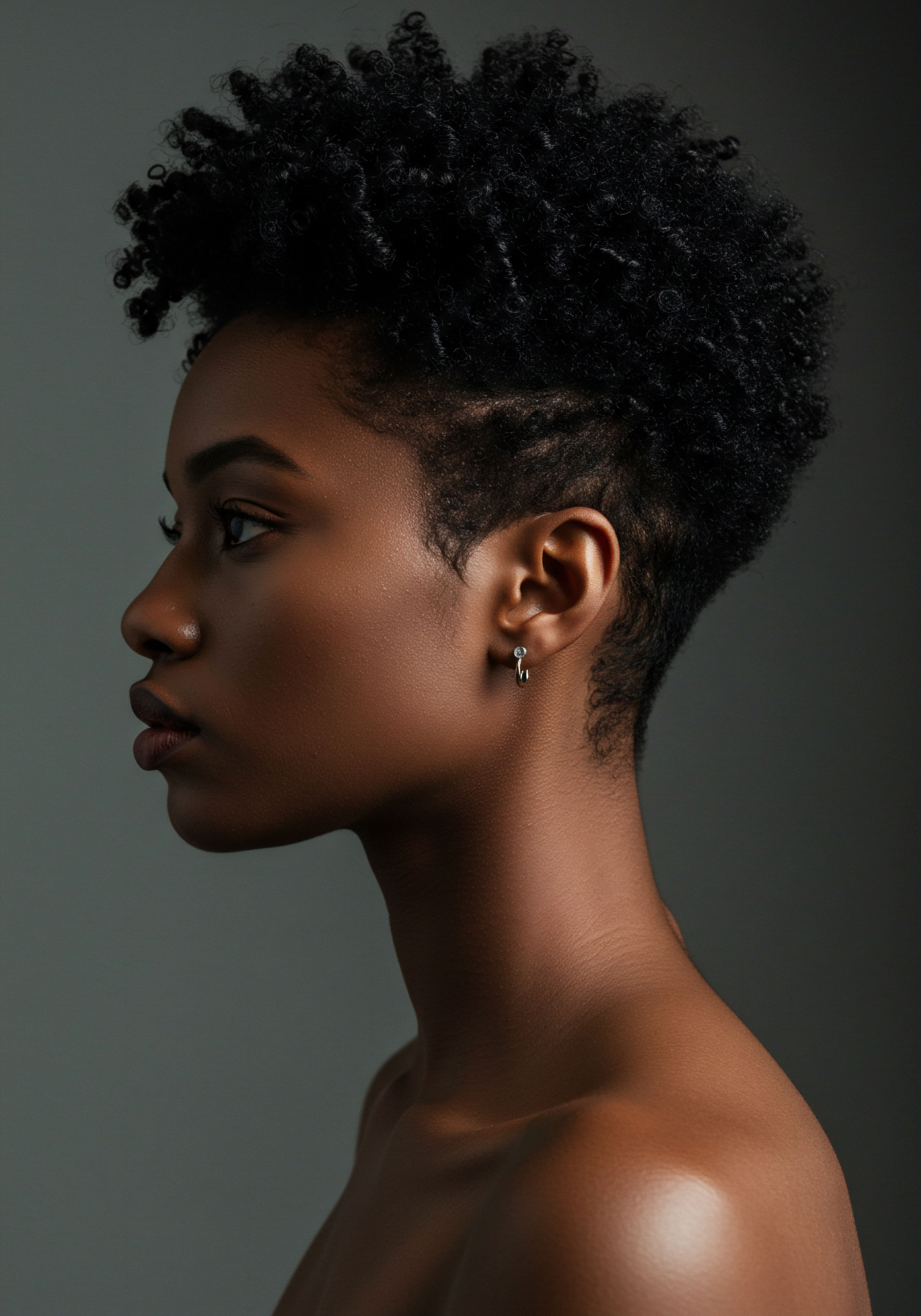
Why Hair Coverings Became Essential
From a practical standpoint, hair coverings offered protection against the elements. The harsh sun, abrasive winds, and dusty environments of many African landscapes could severely dehydrate and damage unprotected hair. A simple wrap could shield delicate strands from these external aggressors, preserving moisture and preventing excessive breakage.
Beyond environmental protection, coverings served to maintain intricate hairstyles for longer periods, reducing the need for frequent, time-consuming restyling. This practical aspect seamlessly merged with cultural and spiritual considerations, making head coverings a holistic element of daily life.
| Function Protection |
| Description Shielding hair from sun, dust, and wind damage. |
| Function Preservation |
| Description Maintaining intricate styles for extended periods. |
| Function Modesty |
| Description Adhering to social or religious customs regarding hair display. |
| Function Identity Marker |
| Description Communicating social status, marital state, or group affiliation. |
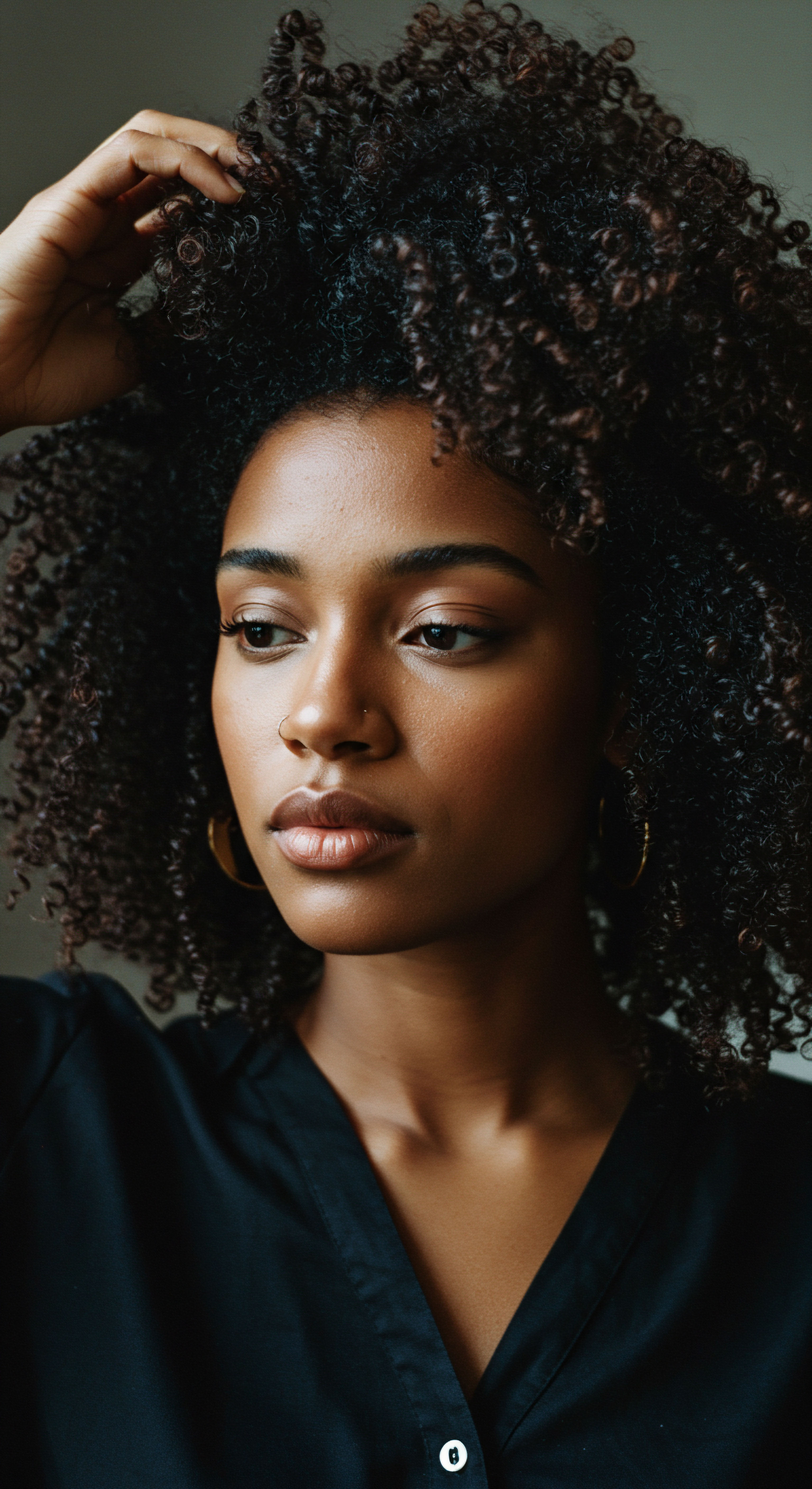
Ritual
Stepping from the foundational understandings of textured hair into the realm of daily practice, we encounter the deep connection between hair coverings and personal ritual. These are not static historical relics but living traditions, adapting and transforming across generations. For countless individuals with textured hair, the act of covering one’s hair has evolved into a deeply personal practice, sometimes a moment of quiet self-care, other times a bold declaration. It is within these daily or periodic acts that the historical significance of hair coverings truly comes alive, guiding us through the intricate methods and tools that have shaped the textured hair experience.
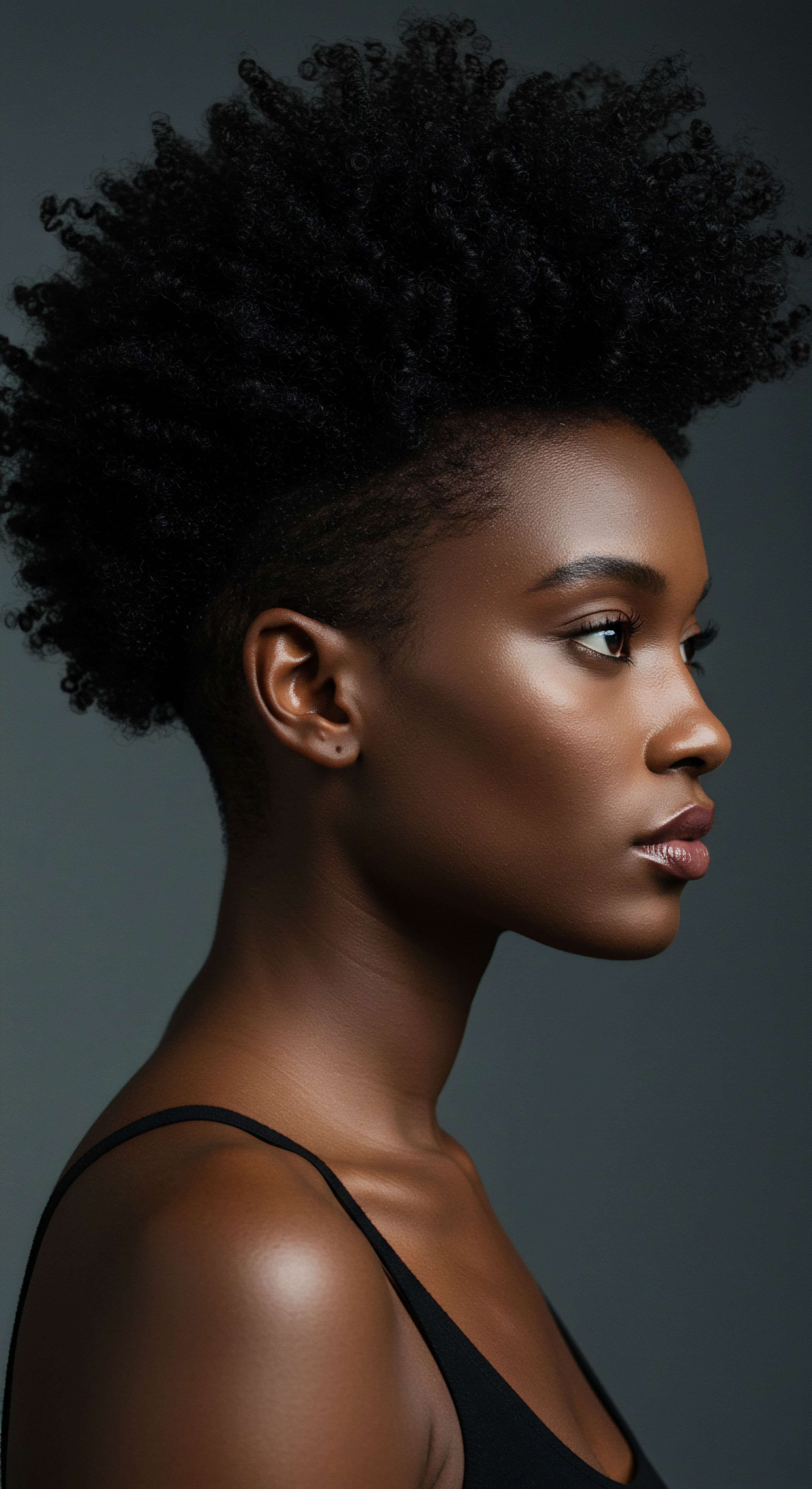
The Protective Art of Styling
Protective styles, often shielded by coverings, are a cornerstone of textured hair care. These styles minimize manipulation, limit exposure to environmental stressors, and help retain moisture, promoting length retention and overall hair health. Braids, twists, and cornrows, ancient in their origins, find their modern expressions in various forms, often culminating in the graceful drape of a headwrap or the snug fit of a bonnet.
These coverings extend the life of these styles, offering a practical shield against friction and tangles, particularly during sleep. The ritual of preparing hair for a protective style, and then covering it, becomes a quiet act of care, a conversation between individual and strand.

How do Hair Coverings Safeguard Textured Hair?
The protective capacity of hair coverings stems from their ability to create a barrier between delicate hair strands and external elements. During sleep, for instance, a silk or satin bonnet significantly reduces friction against abrasive pillowcases, which can strip hair of moisture and cause breakage. Similarly, when venturing outdoors, a headwrap offers a physical shield against harsh sunlight, wind, and pollution.
This physical barrier is crucial for textured hair, which, due to its structural characteristics, is inherently more susceptible to moisture loss and mechanical damage. The choice of material matters immensely, with smooth, low-friction fabrics like silk and satin being preferred to prevent snagging and drying out the hair.
- Friction Reduction ❉ Smooth fabrics like silk or satin minimize rubbing against pillowcases or clothing, lessening breakage.
- Moisture Retention ❉ Coverings help to seal in moisture from products, preventing dehydration.
- Environmental Shield ❉ Protection from sun, wind, dust, and pollutants that can dry out or damage hair.

The Nighttime Sanctuary
Perhaps no ritual is as universally recognized within the textured hair community as the nighttime routine involving bonnets and wraps. This practice, often passed down through generations, represents a deliberate act of preserving the hair’s integrity while resting. The bonnet, a seemingly simple accessory, transforms into a nightly sanctuary for curls, coils, and kinks, preventing them from tangling, flattening, or losing their definition.
It extends the life of a style, making morning routines smoother and less damaging. This commitment to nighttime care underscores a deep understanding of textured hair’s needs, a quiet wisdom practiced in countless homes.
The nightly donning of a bonnet or wrap transforms sleep into a restorative period for textured hair, shielding it from friction and preserving its inherent moisture.
The selection of the right covering for sleep is a deliberate act. While cotton pillowcases absorb moisture, leaving hair parched and prone to breakage, silk or satin alternatives allow hair to glide smoothly, maintaining its hydration and structural integrity. This conscious choice of material reflects a refined understanding of hair science, applied within the intimate setting of one’s personal care routine. The ritual itself becomes a quiet testament to a legacy of self-care, where practical needs and cultural wisdom converge.
| Covering Type Bonnets |
| Material Silk, Satin |
| Benefit Reduces friction, retains moisture, preserves style |
| Covering Type Scarves/Wraps |
| Material Silk, Satin |
| Benefit Versatile styling, moisture retention, edge protection |
| Covering Type Pillowcases |
| Material Silk, Satin |
| Benefit Alternative to direct covering, general friction reduction |

Relay
Moving beyond the personal rituals, the story of hair coverings for textured hair extends into a broader societal dialogue, a relay of cultural meaning, historical resistance, and contemporary relevance. This conversation transcends individual preference, speaking to collective experiences, political statements, and deep-seated societal perceptions. To truly grasp the enduring significance of these coverings, one must consider the complex interplay of power, identity, and resilience that has shaped their journey through time.
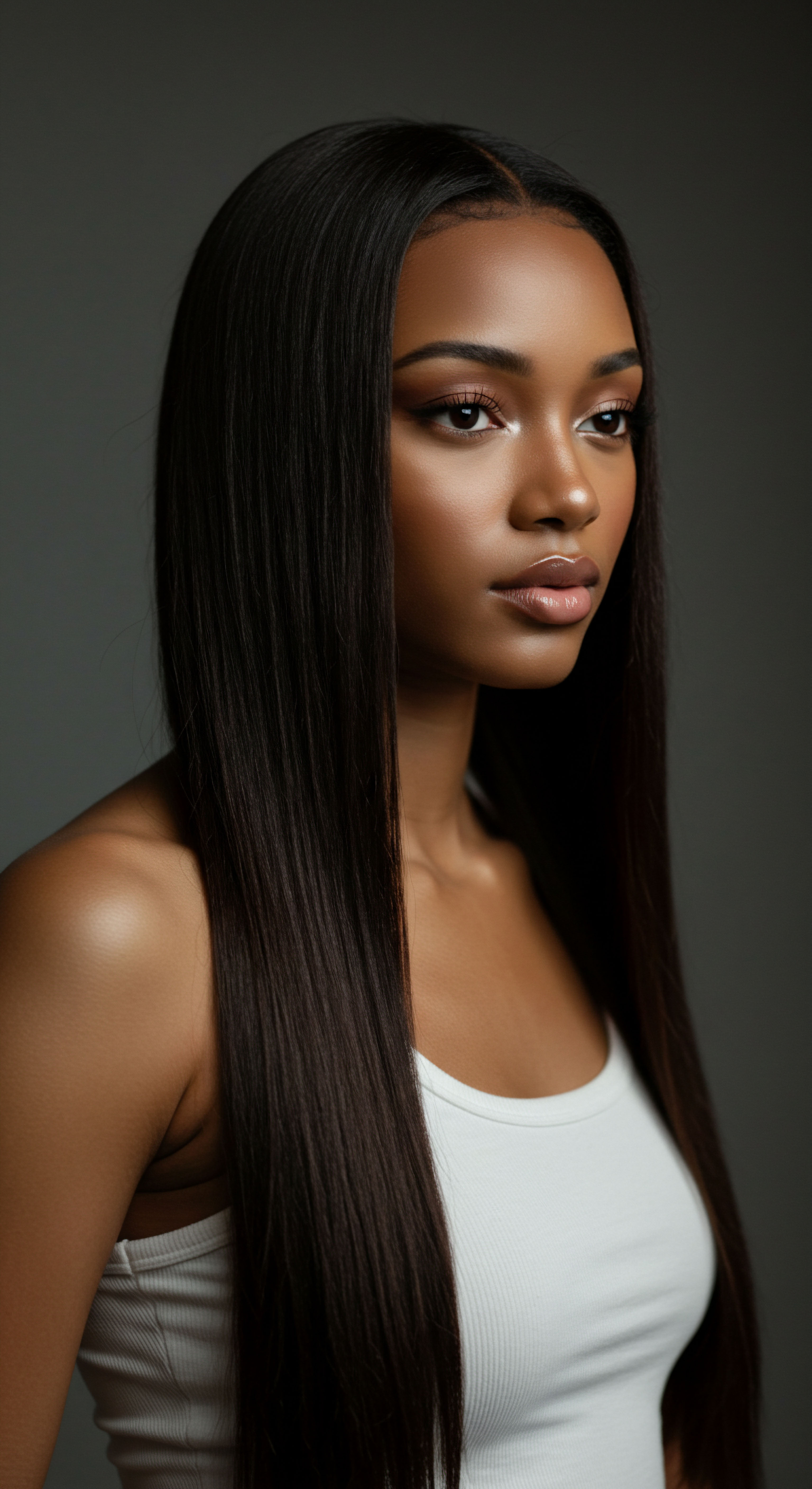
Hair as a Battleground and a Banner
The history of hair coverings for textured hair is inextricably linked to periods of oppression and liberation. During the transatlantic slave trade, Africans were often forced to shave their heads or cover their hair upon arrival in the Americas. This was a deliberate act of dehumanization, a systematic attempt to strip individuals of their cultural identity and sever ties to their heritage. In colonial Louisiana, the infamous Tignon Laws of the late 18th century mandated that free women of color cover their hair with a kerchief, or “tignon,” ostensibly to differentiate them from white women and reinforce a subordinate status.
Yet, in a powerful act of subversion, these women transformed the symbol of oppression into a statement of style and defiance. They adorned their tignons with vibrant fabrics, jewels, and elaborate ties, reclaiming agency and expressing their beauty and cultural pride despite the restrictive decrees. This act of sartorial resistance set a precedent, illustrating how hair coverings could become a banner of resilience and self-determination.

What Role Did Hair Coverings Play in Movements for Social Justice?
The legacy of hair coverings as a symbol of resistance continued into the 20th century. During the Civil Rights and Black Power movements of the 1960s and 1970s, the embrace of natural hairstyles, particularly the Afro, became a powerful visual statement of Black pride and a rejection of Eurocentric beauty standards. Headwraps, too, experienced a resurgence, worn not as a mark of subservience but as a celebration of African heritage and a political declaration of identity. This period saw a conscious effort to redefine beauty on one’s own terms, with hair becoming a central medium for expressing collective consciousness and challenging societal norms.
Hair coverings, once tools of subjugation, were transformed by Black women into symbols of defiant beauty and cultural pride.

The Societal Impact of Hair Discrimination
Even in contemporary society, the echoes of historical hair discrimination persist, influencing perceptions and opportunities for individuals with textured hair. Studies consistently reveal that natural hairstyles are often perceived as less professional than straightened hair, particularly in conservative industries. This societal bias creates tangible consequences, affecting educational and employment opportunities. A striking instance highlights this ongoing struggle ❉ a study commissioned by World Afro Day found that 1 in 6 Children experienced negative or very negative interactions at school concerning their Afro-textured hair.
These experiences ranged from name-calling and intrusive questions to non-consensual hair touching and punitive sanctions based on appearance policies. This statistic speaks volumes about the enduring pressure to conform and the psychological toll exacted when one’s natural hair is deemed “unacceptable.”
The mental health consequences of such discrimination are significant, including internalized racism, diminished self-perception, heightened anxiety, and chronic stress in academic or professional environments. The pressure to chemically straighten hair to circumvent discrimination can also lead to physical damage, creating a cycle where the pursuit of acceptance harms both hair and well-being. This pervasive issue underscores the continued relevance of hair coverings as both a protective measure against physical damage and a symbolic shield against psychological harm, offering a retreat from external judgments and a space for self-acceptance.

Can Cultural Understanding Reduce Hair-Based Stigma?
The journey of hair coverings for textured hair is a testament to cultural resilience and adaptation. From ancient practicalities to symbols of resistance and modern expressions of identity, these coverings represent a rich continuum of meaning. Their story invites us to look beyond surface appearances, to appreciate the profound historical and cultural underpinnings that make a simple piece of cloth or a carefully chosen style a powerful statement. Recognizing these deep connections can certainly help to reduce hair-based stigma.
By learning the historical context, the cultural importance, and the personal significance of textured hair and its coverings, society can begin to dismantle biases and foster environments where all hair textures are celebrated and respected. This deeper comprehension creates space for authenticity and well-being, moving towards a future where hair is universally acknowledged as a beautiful, individual expression, free from judgment or limitation.
The act of covering textured hair today, whether for protection, modesty, or style, carries the weight of centuries of tradition and transformation. It is a quiet acknowledgment of heritage, a practical solution for hair health, and often, a beautiful assertion of self in a world still learning to appreciate the full spectrum of beauty. The dialogue around hair coverings for textured hair remains vibrant, continuously shaping narratives of identity, cultural pride, and personal liberty.

Reflection
The journey through the historical and cultural underpinnings of hair coverings for textured hair reveals a profound truth ❉ hair is never simply hair. It is a living extension of self, deeply intertwined with identity, history, and community. From ancient African practices that revered hair as a symbol of status and spirit, to the enforced coverings of enslavement, and the subsequent defiant reclamation of headwraps as emblems of resistance, the narrative is rich with layers of meaning.
The modern embrace of bonnets and wraps, far from being mere fashion, continues this legacy, offering protection, celebrating heritage, and providing a quiet space for self-care amidst ongoing societal pressures. This enduring tradition, adapting across continents and centuries, serves as a testament to the enduring power of textured hair as a canvas for cultural expression and a symbol of unwavering resilience.

References
- Byrd, Ayana, and Lori L. Tharps. Hair Story ❉ Untangling the Roots of Black Hair in America. St. Martin’s Press, 2001.
- Dabiri, Emma. Twisted ❉ The Tangled History of Black Hair Culture. HarperCollins, 2019.
- Sieber, Roy. Hair in African Art and Culture ❉ Status, Symbol and Style. Prestel Publishing, 2000.
- Hill, D. Rhetoric of Natural Hair ❉ Cultural Contradictions. Advances in Applied Sociology, 2024, 14, 504-516.
- Mbilishaka, Afiya M. Don’t Get It Twisted ❉ Untangling the Psychology of Hair Discrimination Within Black Communities. American Journal of Orthopsychiatry, 2024.
- Akanmori, Harriet. Hairstyles, Traditional African. The SAGE Encyclopedia of African Cultural Heritage in North America. SAGE Publications, Inc. 2015, pp. 440-444.
- Gathers, D. et al. Central Centrifugal Cicatricial Alopecia and Traction Alopecia ❉ A Cohort Study. Journal of the American Academy of Dermatology, 2008.
- Ayanlowo, Olufunmilayo O. and Olumide Otrofanowei. A Community-Based Study of Hair Care Practices, Scalp Disorders and Psychological Effects on Women in a Suburban Town in Southwest Nigeria. Nigerian Postgraduate Medical Journal, 2023, 30(1), pp. 29-37.
- Rosette, Ashleigh Shelby, et al. The Crown Act ❉ A Call for a More Inclusive Understanding of Professionalism. Duke University, 2020.
- Maharaj, Claudette. Beyond the roots ❉ exploring the link between black hair and mental health. TRIYBE, 2025.
- De Leon, Michelle, and Denise Chikwendu. The Halo Code ❉ A Study into Hair Discrimination in UK Schools. World Afro Day, 2019.
- Adeoti, Adeyinka A. Creative Development of Headwrap (Gele) Among Women in Southern Nigeria. International Journal of Progressive Sciences and Technologies, 2023, 37(2), pp. 100-109.